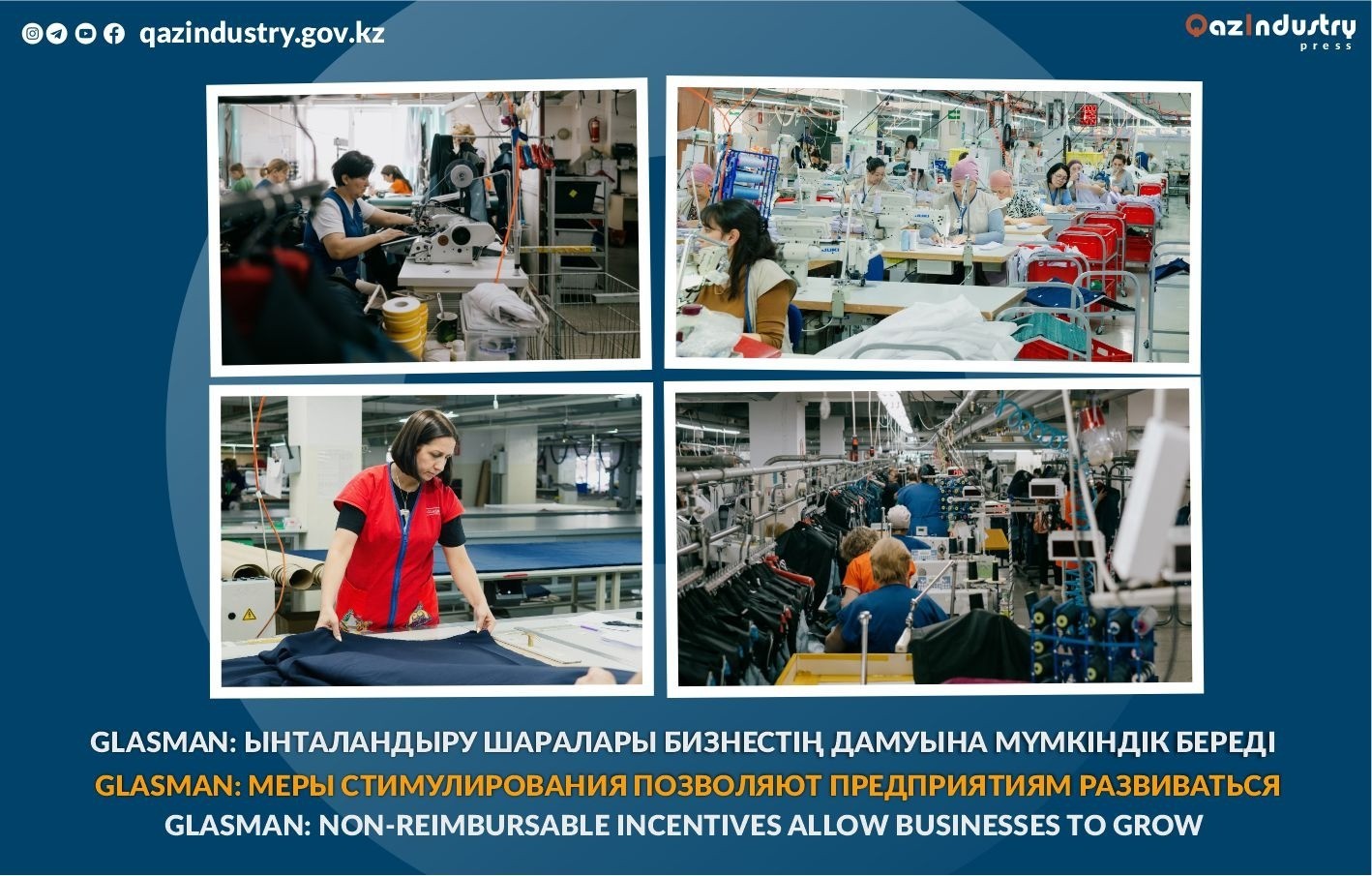GLASMAN is the largest manufacturer of men's classic clothing in Kazakhstan and for more than 25 years has been dressing Kazakhstani men in clothes that meet world standards both in design and fabric quality. This Kazakhstani brand with a German name was founded in 1998 and began its history with the grandmother of the Khilazhev brothers, who was a talented needlewoman.
Today GLASMAN brand is represented in more than 43 brand stores in all regions of the country.
The company employs over 250 people and its production facilities occupy 10 thousand square meters.
The factory has four production lines - for jackets, pants, shirts and knitwear. Every day the masters sew 1000 men's shirts, 400 jackets, 500 of pants and 150 knitted garments. Suits and uniforms from GLASMAN are worn by employees of airlines, national companies, commercial facilities, banks, restaurants, security structures, as well as schoolchildren.
Representatives of QazIndustry visited the GLASMAN factory in Talgar near Almaty and familiarized themselves with the process of production.
"Last year we created more than 41 thousand units of products," says Anvar Khilazhev, director of GLASMAN. - The main problem is raw materials: we import them from Turkey, China and European countries. Threads - from Germany and England, fabrics - from Europe. The light industry sector is experiencing a shortage of personnel, so we are raising workers ourselves, training them in Germany".
There is perfect discipline in production. They work according to a set plan: in each shop there is a scoreboard with a designated amount of production. For example, by eleven in the morning, when we visited the factory, the seamstresses had produced 300 shirts out of the 1000 planned for that day.
The factory is fully automated. Even the patterns are electronically applied to the material.
We were shown how GLASMAN suits are created. The process is painstaking, but fast - smart technology helps.
First, the fabric is treated on a special machine with high temperature so that it does not "sit" on the future garment. Then it has to "rest" for two days, i.e. lay down. Then, using special equipment, the inspector examines the material in detail for defects. Each roll of fabric is assigned a barcode, the data is loaded into the database - the fabric is ready for sewing.
In the design room, the master electronically overlays the patterns on the material. The program itself selects the optimum layout with fewer residues.
"Our equipment automatically cuts the blanks - manual cutting of fabric is a thing of the past. And although thanks to technology the possibility of errors is minimized, after cutting the fabric is still checked by a controller," said A. Khilazhev.
Then the cut-out parts are sent to the sewing shop. Here the models are dismantled into individual parts, overlocked, pockets are stitched, fittings, belts and buttons are sewn on. Everything is done with the help of automated sewing machines.
The process is completed by ironing the finished product.
"We applied to QazIndustry for the service of reimbursement of part of our costs, which were directed to the automation of technological processes, - continues the head of the company. - And we were supported. I believe that gratuitous measures of state stimulation are a tool that allows enterprises to develop. An entrepreneur reimburses a part of his expenses, which can be used for further modernization. This accelerates the development of the business. Domestic business needs to be helped, because it is a domestic value and taxes".
The enterprise launched a new line of women's and men's sportswear. The demand is already there, the enterprise says: over the 25 years of GLASMAN's history, Kazakhstanis are confident in the quality of its products, preferring Kazakhstani brand clothing to Turkish and Italian manufacturers.





